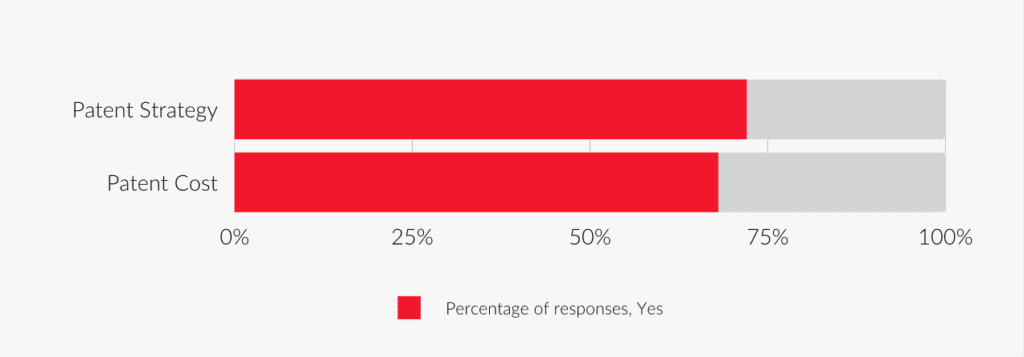
Intellectual Property Strategy
Managing IP risk and value
Every company needs an IP strategy for dealing with value and risk
Intangible assets now account for the bulk of the value of most companies, and IP strategy is now a boardroom issue. LexisNexis Intellectual Property Solutions suite of patent analytics is key for any organization integrating its patent strategy with its business and IP strategy more generally.
Intellectual Property and Patents

Patent Strategy as part of an IP Strategy
- Patents are increasing in importance across all sectors with a greater share of budgets, allocated towards patent strategy as part of the overall IP strategy.
- Over $40 billion is spent globally on patents each year.
- Ensuring that your patent spend is allocated in line with any corporate or IP Strategy, requires a patent intelligence strategy. Our solutions enable IP professionals to make evidence-based decisions around their patent portfolio.
Developing an IP Strategy
Developing an IP strategy requires engagement from stakeholders across the business.
- The importance of IP strategy should lie at the core of corporate policy right from a company’s earliest days.
- Proactive engagement in an IP strategy can mitigate business risk in the future.
- IP strategy forms part of any Corporate Strategy function of an organization.
- Even a business that has no meaningful IP assets of its own is likely to be dependent on the IP it licenses from others.
- Patent strategy is a key part of any Intellectual property strategy, and the high cost of patent portfolios is subject to scrutiny.
“LexisNexis Cipher gave us the ability to understand the technology landscape and was an important foundation layer in creating a strategy for protecting our innovations whilst enabling us to understand how best to deal with others in potential conflict areas.”
Lucy Wojcik
Head of IP
Ocado
Frequently Asked Questions
How to align patent strategy with business strategy?
Communication is critical to aligning patent strategy to your IP strategy more broadly. Many organizations establish an IP steering group with representatives from across the business, with senior stakeholders reporting directly to the board, typically quarterly.
What’s the best way to communicate patent strategy to the CFO, CTO and the board?
Patents have historically been regarded as a cost. Integrating strategic patent intelligence helps to develop a fresh narrative, where patents are now seen as strategic assets. This approach can help in mitigating the risk of litigation or adverse licensing outcomes. Find out more about communicating Portfolio Optimisation or Competitive Intelligence.
How to benchmark an IP portfolio to competitors and new entrants?
Benchmarking data can be slow, expensive and inaccurate, which erodes trust in patent intelligence and creates obstacles to comprehension of your patent strategy. Cipher classification maps patents to technologies using your technology lens. You can also automate the production of actionable benchmarking metrics.
“It’s important to recognise that there is an intensely competitive landscape. With respect to the movement from traditional to non-traditional players, it’s really important that we understand what the landscape is and what IP rights are out there.”
Dr. Bobby Mukherjee
Chief Counsel, Intellectual Property and Technology Law
BAE Systems PLC
Featured Content

Pulling Back the Curtain: Calculating ROI of patent portfolios
Measuring the return on an organization’s most expensive asset. This report looks at whether a portfolio ROI is too difficult to measure.

Management of Patent Risk
Learn how patent owners deal with patent risk and why patent risk management is crucial to protecting your organisation’s greatest asset.

Energy Transition – Oil and Gas Supermajors
Our report finds that supermajors technology innovation is more evident in the Materials, Mechanical, and Sensors & Optics categories.
Please fill out the form with your details, and we will get in touch to schedule a demo.

We are excited to show you an alternative to manually tagging patents and building long boolean queries to get your view of the technology landscape. With the automated classifiers, you can:
- Pull through all the latest patents in the technology area
- Analyze the results to understand new technology trends
- Benchmark your portfolio against your competitors
- Optimize your portfolio for monetization or risk management
Submit the form, and we’ll be in touch.







